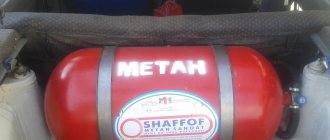The domestic one is trying to occupy the station wagon niche in the Russian market with the brand new Lada Vesta SW.
Having thoroughly studied the technical characteristics of the model, it is worth immediately noting its improved conditions for rear passengers when compared with the sedan. The designers also worked on the suspension and made a sloping roof on the trunk.
Let's analyze the Lada Vesta SV station wagon more thoroughly and find out all the features of the car, which has taken a position between the popular sedan and the brand new Cross crossover.
Photo of the interior of the sedan modification
Inside the Lada Vesta car, materials and innovations were used that had not been used on a vase before. This made overall operation more pleasant for people; for the first time on a vase, the steering column could be adjusted for reach and installation angle. The steering wheel can be adjusted for reach by 50 mm and angle by 7 degrees. Vesta now has a multifunction steering wheel, which was not previously available on any VAZ model. The steering wheel has a three-spoke badge in the middle, it looks made with high quality and accuracy! The steering wheel has control buttons for the cruise control radio and telephone.
The instrument panel is interestingly implemented; it is grouped into three wells, all of which resembles a sports car. The quality of the panel material is good. The panel has few lamps, but despite this it looks informative. The torpedo is made of dark plastic. The center console is level with the panel, but protrudes forward a little and this is convenient for use; you don’t need to reach out to press a certain button. The console is divided into two parts, but depending on the configuration, it is located on top (in the expensive configuration there is a multimedia system with a 7-inch screen), and a branded radio in the cheaper basic version. On the second part of the panel there is a climate system separated by a row of buttons. The central tunnel is equipped with two cup holders.
The car has good visibility; the arches do not interfere with the view, as on the previous model 2170. Two airbags are built into the front panel (driver plus passenger). Regarding the interior trim, it looks high quality. The door cards, by the way, use new Soft Look plastic, are visually similar to leather. The plastic is embossed and hard to the touch. Despite the cheap materials, the interior looks quite strict and not childish, and if the car is in the Luxury configuration, the interior is equipped with additional chrome inserts. In general, Vesta’s interior looks a class higher than it is: ergonomic seats with good upholstery, all instruments and elements are arranged thoughtfully. When you get into the car, it’s pleasant to be in, you can see the road, and it’s easy to read the information on the speedometer. The seats have a high depth of adjustment, which allows tall people to feel comfortable behind the wheel. In previous models, there was limited space in the back, which was a big minus. There is ample knee room behind the driver; the distance from the rear sofa to the front seats is 226 mm. In general, it feels like the dimensions inside the car have been thought out. The seats are comfortable, the headrest follows the lines of the body and is friendly with the back of the head when standing in a traffic jam. The distance from the floor to the rear sofa is 345 mm, and from the floor to the top of the front seats is in the range from 276 to 310 mm. The distance from the floor to the steering wheel (since it is adjustable) is from 450 - 528 mm.
Engine and gearbox specifications
We list all the power units available to Lada Vesta SW buyers:
- 122 l. s – 1.8 l with 5MT.
- 106 hp - 1.6 l with 5MT.
- 122 l. s – 1.8 l with 5AMT.
- 106 l. s – 1.6 l with 5AMT.
The recommended fuel type is gasoline no lower than 92. Although 95 should be considered optimal, because it is with it that most motorists manage to achieve factory performance characteristics for acceleration and acceleration of the car.
The wheel diameter on the basic version is 15 inches. If desired, you can purchase additional 16-inch wheels, which are available when upgrading to the “Image” package. The Cross crossover allows you to increase the diameter to 17 inches.
Considering the concept of the Lada Vesta SW model, there is no point in striving for larger wheels. There is no appropriate engine power and optimal transmission for them. Later in the article it will become clear where such thoughts come from.
The maximum speed corresponds to the selected motor type:
- 122 l. s – 180 km/h;
- 106 l. s – 174 km/h.
Acceleration has never been AvtoVAZ's strong point. Under ideal conditions, the station wagon can accelerate in 10.9 seconds. Engine 1.6 l with 106 hp. With. and 5ATM shows the worst results among competitors in its class. Rarely does anyone manage to come close to the stated performance of 14.4 seconds.
Dimensions of the Lada Vesta interior and comparison with competitors
As a basis for comparison, let's take the interior of the closest 4 competitors of our Vesta. The distance from the front seat (when the driver is sitting in it) to the ceiling is 1020 mm. If we take the competitors, then only Logan wins, it has 1030 mm, Solaris has 1015, Ravon Gentra 1015, Polo has a modest 1010 mm. The distance from the pedals to the knee and to the back of the front seat, depending on the height of the person, is in the range: 975-1175; Logan has a distance from 960 mm to 1190; Hyundai Solaris has from 970 to 1190; Ravon has numbers from 965-1145; Polo 955-1150. Interior height in the middle of the car: Lada Vesta – 1190 mm; Logan - 1210 mm; Solaris – 1200 mm; Ravon – 1170 mm; Polo – 1180 mm. The distance from the rear sofa (with a passenger) to the ceiling is 2180-925 mm; by the way, the Solaris is the same. Ravon has 960 mm, just like Logan; Polo-935 mm Distance from the back of the rear row to the front seat: Vesta from 610 to 850 mm; Logan from 645 to 855 mm; Solaris from 565 to 810 mm; Ravon from 660 to 890 mm; Polo from 632-880 mm. It is clear from the numbers that our car is not the tightest.
Salon Lada Vesta SV cross
Since the cross body car came out at the end of '17, its interior is no different from the '18 car. Both the driver and the passenger feel comfortable sitting in the Cross. Many people are interested in the question of whether the Lada Vesta has 7 seats, the answer is: it doesn’t, there are no 7 seats in the interior of the crossover, there are only 5 of them.
Let's start with the Cross steering column; outwardly it is no different from the steering wheel of a Vesta sedan - all the same buttons for controlling the multimedia system. However, there are differences: in any configuration of the Vesta Cross, the steering wheel is covered with leather.
Photo of the interior of the cross modification
The central panel is no different from the sedan, everything is still harmoniously located in its place, which makes driving easier. There is a glove box mounted on the panel on the right; it has a decent volume. In the center of the cabin there is a central tunnel with cup holders and a gear knob. The handle of the box depends on what kind of box is on the car.
After the gearbox there is an armrest, convenient for the elbow of the right hand. The plastic in the cabin is the same everywhere, in the door cards and on the dashboard. Door cards have harmonious inserts that highlight the design. The doors have spacious containers in which you can put small things or a bottle of drink. Overall the door finish looks decent. Each door has its own electric lift, and the driver's window control unit with rear door locking and mirror adjustment.
The Vesta Cross floor is carpeted everywhere. It can be called a classic flooring material in many foreign cars and vases. The ceiling on Vesta Cross is light, but it is made with high quality; in case of contamination, the dirt can be easily washed off.
Let's find out what engine is on the Lada Vesta station wagon from 2022
Engineers designed the VAZ-21179 unit in such a way as to minimize the costs of its mass production after modernization. By increasing the torque, the manufacturer will provide the SW models with decent throttle response and acceleration efficiency. Now the low speed zone is raised; at a thousand revolutions per minute, the owner has access to a torque of 127 Nm.
How did you manage to reach a new level of power supply of the power plant? A standard boost technique was used - increasing the working volume due to the piston stroke. After modernization, this parameter became 84 mm, instead of 75.6 in the previous model. But the meaning of the improvements is not limited to pure geometry - it was necessary to carry out a set of measures. Here are the main ones:
- Increasing valve diameter.
- Modified intake module and gas channels.
- Improved cylinder head cooling system.
- Application of metal cylinder head gasket.
- Modernization of the crankshaft, now it has smaller diameter connecting rod journals.
- Using a phase shifter to control valve timing.
To fully appreciate what kind of engine is now installed on the Lada Vesta SW station wagons, it is worth taking a closer look at some technical details.
Crankshaft and cylinder block
At first glance, the block remained the same as before. However, this is only external. Of course, the key decisions remain the same, but there are still differences:
- An additional oil channel is installed between the second and first cylinders; this will have a positive effect on the feedback from Vesta owners in terms of repair and operation.
- A V-shaped channel for coolant has appeared in the jumper area between the cylinders, which increases the service life of the piston rings.
- The crankshaft now has three classes based on the dimensions of the main and connecting rod journals; the liners and beds of the main bearings received the same classification.
- The new crankshaft has no oil passages where chips can accumulate. They were replaced by diagonal drillings.
Block head
This part of the VAZ-21179 has also been modernized; a new system of oil channels has appeared, responsible for controlling the phase shifter. An additional oil supply point was introduced between the first and second cylinders. This channel supplies lubricating fluid to the phase shifter valve.
In the front support of the intake camshaft, two channels were added for supplying lubricant and one for draining it. The electrovalve combines these three channels in a certain sequence with the phase shifter chambers, which contributes to its rotation.
The cylinder head water jacket now has increased flow sections for coolant, which optimizes the head cooling process. The temperature regime of the zones around the spark plugs, exhaust ports and valves not only decreased, but also leveled out across the cylinders.
The configuration of the new gas channels was well thought out, which allowed the “one hundred and seventy-ninth” Lada Vesta engines to improve their technical characteristics in terms of efficiency. The implementation is expressed in the vertical and horizontal vortex formation of the combustible mixture flow, as a result of which it turns out to be mixed. It all depends on the operating mode of the motor - the flow can be either vertical or horizontal.
VVT system
The automotive industry has been using phase regulators for more than twenty years, but the domestic auto industry has only now implemented this technology. Together with our partners from Ricardo, our engineers developed a solution to implement a “phaser” on the intake camshaft. This gave, first of all, a significant increase in torque and power, and also made it possible to reduce exhaust toxicity.
The essence of the technology is that the camshaft now rotates not in relation to the movement of the timing belt, but at a certain moment leads or, on the contrary, lags behind it. As a result, the phase shifter, by changing the periods of opening and closing of the valves, adapts the operation of the internal combustion engine to operating conditions. Phase regulators for the motor are supplied by the German company INA.
timing belt
Compared to the base unit, the diameter of the intake valve plates has increased by 2.6 mm, and the exhaust valves by 2 mm. The design itself has become lighter by reducing the diameter of the rod, now it is only 5 mm. The valves are supplied by the German concern Mahle; domestic products include discs, hydraulic tappets and valve stem seals.
The camshafts themselves are a prefabricated structure - cams are mounted on a steel pipe with welded tips. This makes it possible to orient the timing belt for various tasks, as evidenced by reviews from Vesta owners with manual and automatic transmissions. Shafts are produced in Korea.
New crank mechanism
The connecting rod and piston group is the unit responsible for the reliability of the entire unit, so special attention was paid to it during development. This is important for those who are interested in what engine is on the new Lada Vesta station wagon from the SW and SW Cross line. The piston is externally similar to its counterpart from the 1.6-liter engine, but its compression height is increased by 1.3 mm, which makes it possible to reduce the temperature in the area of the upper compression ring.
The shape of the skirt has also changed - windows have appeared for measuring the base diameter. The first two rings are serial, but the oil scraper ring is chrome-plated. The connecting rod is fixed at the ends of the journal. ShPG parts are supplied by Federal Mogul.
Water pump
In the base engine, the water pump was a weak point, so the VAZ-21179 was equipped with a new pump from the Korean manufacturer GMB. Its performance is the same due to the modernized cooling jacket and the coolant pumping has been increased. In addition, it is worth noting the following details:
- A more reliable bearing has been used.
- The oil seal has an improved design.
VAZ workers claim that these pumps are capable of withstanding a mileage of about 200,000 km, which is twice as much as the previous model. I am glad that the production of GMB units will be established in Togliatti.
Oil pump
Since VVT technology requires a quick response to changes in speed, the pump of the new motor has increased performance. A good reserve of oil pressure is needed so that the phaser chambers are filled on time, and it rotates in a timely manner. The old pump was capable of pumping 33.4 liters of lubricant per minute, but the new pump pumps 54 l/min.
The oil intake pipes are increased in diameter to 20 mm, and the shape of the oil sump is made in such a way as to minimize the drainage of oil from the intake unit during turns. The volume of the tray has been increased to 4.4 liters. Now the lubricating fluid in engine 21179 on the Lada Vesta has time to cool well and maintain technical characteristics during operation.
Salon Vesta SV
It is distinguished by poorer colors, for example, the SW station wagon does not have orange. Otherwise, the interior of the station wagon is similar to the cross.
Interior of Lada Signatur (Long)
Since the Signature is a custom-made car and will be produced in a limited edition, its interior will be distinguished by its exclusivity.
This car is designed for the leadership layer of citizens and is focused on comfort. The signature body is elongated and the lion's share of the space is in the rear seats. The interior is upholstered in leather with individual colors.
Gray leather seats with perforations and black inserts. The quality of the leather is high. The door cards are covered with film on top. Looks decent, especially the Fiber embossing. The ceiling is covered with Alcantara, and the door cards, steering wheel and gear knob are covered with leather.
The rear armrest is a different story, it looks expensive, with a Signature nameplate. It looks massive, has 2 cup holders and seat heating buttons, and half of the perimeter is lined with plastic painted in varnish. The other half of the armrest is soft and covered with leather.
Sedan or station wagon?
The question is more of a religious one.
On the altar of sedanophiles is an advantage in visibility to the rear (the rear window opening is larger, and it is not covered in dirt), an isolated luggage compartment and better acoustic comfort (in a station wagon there is more aerodynamic noise, including due to the roof rails). The sedan is 42 kg lighter, thanks to which it reaches 100 km/h half a second faster, and it is 0.2-0.3 l/100 km more economical in our ARDC cycle, which simulates real driving in Moscow and the region. And it is for the sedan that VAZ offers the widest choice of trim levels: the most affordable Classic version and the most expensive Exclusive version are not prescribed for station wagons. The full version is available only to subscribersSubscribe now
I'm already subscribed











